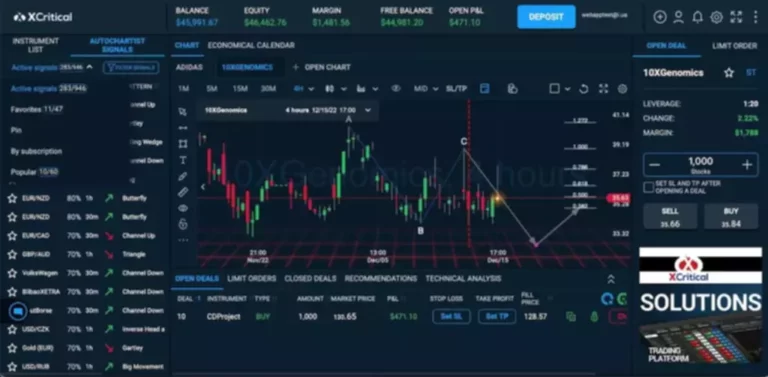Content
Globally, ICE supports over 3,000 IOPV calculations to the leading financial institutions in the ETF industry with over $4 trillion in assets under management calculated daily. As the industry evolves and various types of investors continue to adopt ETFs, ICE plays an active role to support trading strategies that lead to best execution. The future of ETF liquidity providers looks bright, but it’s not without its etf liquidity providers challenges.
The Role of Liquidity Providers in ETF Creation and Redemption
Longer-term investors could have a time horizon of 10 to 15 or more years, and intraday price movements could induce them to trade unnecessarily. In fact, Know your customer (KYC) a big swing over a couple of hours could prompt emotional trading where pricing at the end of the day could keep irrational fears from distorting an investment objective. There is a lesser chance of ETF share prices being higher or lower than those of underlying shares. ETFs trade throughout the day at a price close to the price of the underlying securities, so if the price is significantly higher or lower than the net asset value, arbitrage will bring the price back in line. Duplicating that benefit by buying individual stocks would be much more cumbersome in terms of the time, research, and trading required, and likely more expensive.
Earn More With Dividend Stocks Than With Annuities for Your Retirement
If the ETF is trading https://www.xcritical.com/ at a premium to its underlying value, investors may choose to sell the ETF shares or buy the underlying securities, or both. These actions should bring the ETF’s price and the market value of its underlying securities closer together by reducing the ETF share price or raising the price of the underlying securities, or both. Purchases and sales of existing ETF shares among investors, including APs, are referred to as secondary market trading or activity.
The Future of ETF Liquidity Providers

High trading volumes and narrow bid-ask spreads frequently signify good liquidity, making it easier and more cost-effective for investors to trade. The redemption process in the primary market is simply the reverse of the creation process. A creation unit is redeemed when an AP acquires the number of ETF shares specified in the ETF’s creation unit and returns the creation unit to the fund. In return, the AP receives the daily redemption basket of securities, cash, and/or other assets. The total value of the redemption basket and any cash adjustment is equivalent to the value of the creation unit based on the ETF’s NAV at the end of the day on which the transaction was initiated.

A limit order—an order to buy or sell a set number of shares at a specified price or better—gives investors some control over the price at which the ETF trade is executed. Although ETFs have many characteristics that are similar to stocks, liquidity is not one of them. Therefore, it‘s important to look beyond trading volumes and on-screen indicators when assessing ETF liquidity.
In this article, we will delve into the essential criteria that a liquidity provider should meet to ensure the best execution and financial stability for brokers and their clients. Discover dividend stocks matching your investment objectives with our advanced screening tools. Some investors feel strongly that active is always better or passive is always better. But many find that there are pros and cons to each approach and may use a mix of both, and each strategy could have a place in your portfolio.
Creation is the process of issuing new ETF shares to meet demand from investors, while redemption is the process of redeeming ETF shares back to the issuer in exchange for the underlying assets. Understanding the mechanics of these processes is crucial for market makers and authorized participants to provide liquidity and ensure the smooth functioning of the ETF market. The ability to create or redeem ETF shares at the end of each trading day also helps an ETF trade at market prices that approximate the underlying market value of the portfolio.
- When the market maker runs out of ETF units because investors have purchased them all, they repeat the process.
- Schedule monthly income from dividend stocks with a monthly payment frequency.
- In 2019, the SEC also granted separate approval through the exemptive relief process to five models of ETFs that did not fall under the new ETF rule because they do not fully disclose their portfolio holdings each day.
- The fund may permit or require an AP to substitute cash for some or all of the securities or assets in the creation basket.
- Among other things, ETFs invest in broad and narrow market indexes covering particular market sectors and industries.
This means that there are always plenty of buyers and sellers and narrow bid-ask spreads. Of course, ETFs have pitfalls as well, from low liquidity in some cases to the risk and complexities of the most speculative varieties of exchange-traded funds. Since their introduction in 1993, exchange-traded funds (ETFs) have exploded in popularity with investors.

Before creating ETF shares, market makers may need to source underlying securities in the ETF basket by tapping into their own inventory or buying from the underlying security market. No, only APs are allowed to transact directly with the ETF issuer to create and redeem shares. Retail investors can only buy or sell ETF shares on a secondary market exchange. The size of an ETF measured by its assets under management (AUM) likewise doesn’t necessarily dictate its liquidity. Even ETFs with smaller AUM can have high liquidity if they track a liquid index or sector and have active APs facilitating the creation and redemption process. An ETF can have good liquidity even with lower trading volumes because of the creation and redemption mechanisms.
Having access to deep liquidity pools gives brokers the means to act in the best interest of traders and keep forex markets agile. LPs can influence market depth by ensuring large market orders can be fulfilled without significantly affecting security prices. To keep worldwide markets healthy, there are strong liquidity providers, market makers, and brokers.
As a end result, we can benefit from a quantity of fund managers’ experience and experience. Asset allocation funds, gold funds, worldwide funds, ETF FoFs, and many extra can be found. Their performance is essentially determined by the index or benchmark they monitor. Once a fund is established, managers need ongoing access to specific resources, data and technology to keep an ETF running. ICE ETF Hub offers efficiencies to standardize and simplify the creation & redemption process across the ETF primary market for all market participants to interact through a single platform.
Net Asset Value (NAV) The price of a share determined by the total value of the securities in the underlying portfolio, less any liabilities. While ETFs are generally listed on one exchange, trading of ETF shares occurs across many trading venues. These include national securities exchanges (e.g., NYSE, Nasdaq and CBOE), alternative trading systems (ATSs or “dark pools”), and over the counter. Even if some money is left after paying the creditors, the holders of preferred shares receives a commission next. By daily trading volume, the S&P 500 SPDR (SPY), Invesco QQQ (QQQ), and Financial Select Sector SPDR (XLF) tend to be among the most active ETFs.
In addition to robust liquidity, a price transparency feature which investors may seek is information on the value of a fund’s assets. Indicative Optimized Portfolio Value (“IOPV” also known as iNAV or iIIV) calculation service provides this to ETF investors to help evaluate their positions and make better-informed trading decisions. Accessibility to different markets and connectivity to various liquidity sources are essential for brokers aiming to execute their traders’ deals seamlessly. A reliable liquidity provider should enable retail clients to access market data with ease, fostering a more inclusive trading experience. Explore connectivity options like FIX API and compatibility with popular trading platforms. Liquidity is a lifeline for brokerage operations, and disruptions in liquidity services can impact the extensiveness of brokerage offerings.
